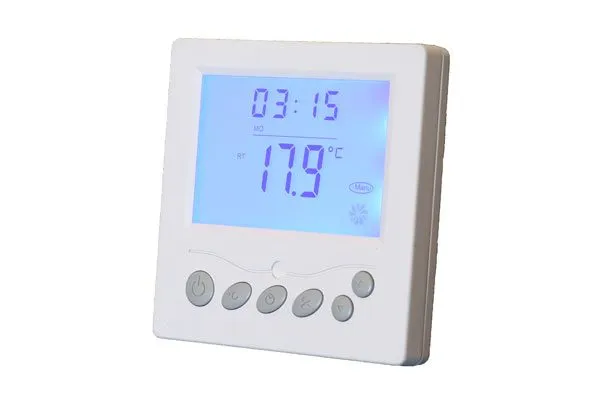Exploring the Benefits of Room Thermostats and Diaphragm Pumps

Effective HVAC and plumbing systems rely on key components that contribute to maintaining comfort and operational efficiency. Two such components are room thermostats and diaphragm pumps. This article delves into their functions, benefits, and how they improve overall system performance.
The Role of Room Thermostats in HVAC Systems
Room Thermostats are essential for controlling indoor temperatures accurately and efficiently. These devices help maintain a comfortable environment and optimize energy use. Here’s how room thermostats benefit HVAC systems:
Precise Temperature Control
Room thermostats enable precise adjustments of indoor temperatures, allowing residents and businesses to maintain consistent comfort. With modern, programmable options, users can set schedules that match their daily routines, minimizing energy waste during non-peak hours.
Energy Savings
By maintaining temperatures efficiently and avoiding unnecessary heating or cooling, room thermostats contribute to significant energy savings. Households and businesses that use programmable room thermostats can reduce energy consumption by 10-15% annually.
Increased HVAC Efficiency
A well-calibrated thermostat ensures that HVAC systems operate only when needed, reducing wear and tear on the equipment. This not only enhances system performance but also extends the lifespan of heating and cooling units.
Understanding the Utility of Diaphragm Pumps
Diaphragm Pumps are versatile components widely used in plumbing and various industrial applications. Their design allows them to handle different fluids effectively, making them valuable in maintaining system reliability. Here are the primary benefits of diaphragm pumps:
Efficient Fluid Handling
Diaphragm pumps are known for their ability to transfer fluids with precision, making them ideal for applications where consistent flow and pressure are required. This is particularly useful in systems that deal with sensitive or corrosive fluids.
Durability and Reliability
Constructed to handle harsh conditions, diaphragm pumps offer superior durability. Their robust design ensures minimal maintenance, even when dealing with abrasive or viscous materials. This leads to increased reliability and reduced downtime.
Self-Priming Capability
One of the standout features of diaphragm pumps is their self-priming capability. This means they can operate effectively without needing to be manually primed, making them suitable for situations where reliability and ease of use are crucial.

Integrating Room Thermostats and Diaphragm Pumps for Optimal System Performance
Combining room thermostats and diaphragm pumps within HVAC and plumbing systems can enhance overall system functionality. Here’s how to maximize the benefits:
Strategic Placement and Programming of Thermostats
Ensure that room thermostats are installed in locations that accurately represent the average indoor climate, away from direct sunlight, vents, or external walls. Program thermostats based on occupancy patterns to optimize energy use and maintain comfort.
Select the Right Diaphragm Pump for Your Application
Choose diaphragm pumps that match the requirements of your plumbing or HVAC system. Consider factors such as fluid type, flow rate, and pressure needs to ensure compatibility and efficiency.
Routine Maintenance and Monitoring
Regularly check room thermostats for calibration accuracy and ensure that diaphragm pumps are free from blockages or wear. Routine maintenance helps identify potential issues early, preventing costly repairs and downtime.
Key Benefits of Optimizing HVAC and Plumbing Systems
Integrating room thermostats and diaphragm pumps can yield several benefits:
- Enhanced Energy Efficiency: Room thermostats reduce unnecessary HVAC operation, and diaphragm pumps ensure efficient fluid movement, leading to overall energy savings.
- Improved System Reliability: The durability and precision of diaphragm pumps, combined with the optimized control provided by thermostats, result in a more reliable system.
- Cost Savings: Reduced energy consumption and lower maintenance needs translate to long-term cost savings for both residential and commercial properties.
- Comfort and Convenience: Room thermostats enable consistent temperature control, while diaphragm pumps maintain the necessary fluid flow, ensuring comfort and functionality.
By leveraging the capabilities of room thermostats and diaphragm pumps, HVAC and plumbing systems can operate at peak performance, providing reliable and efficient service. Investing in these components is an effective way to enhance comfort, save energy, and extend the life of your systems.





